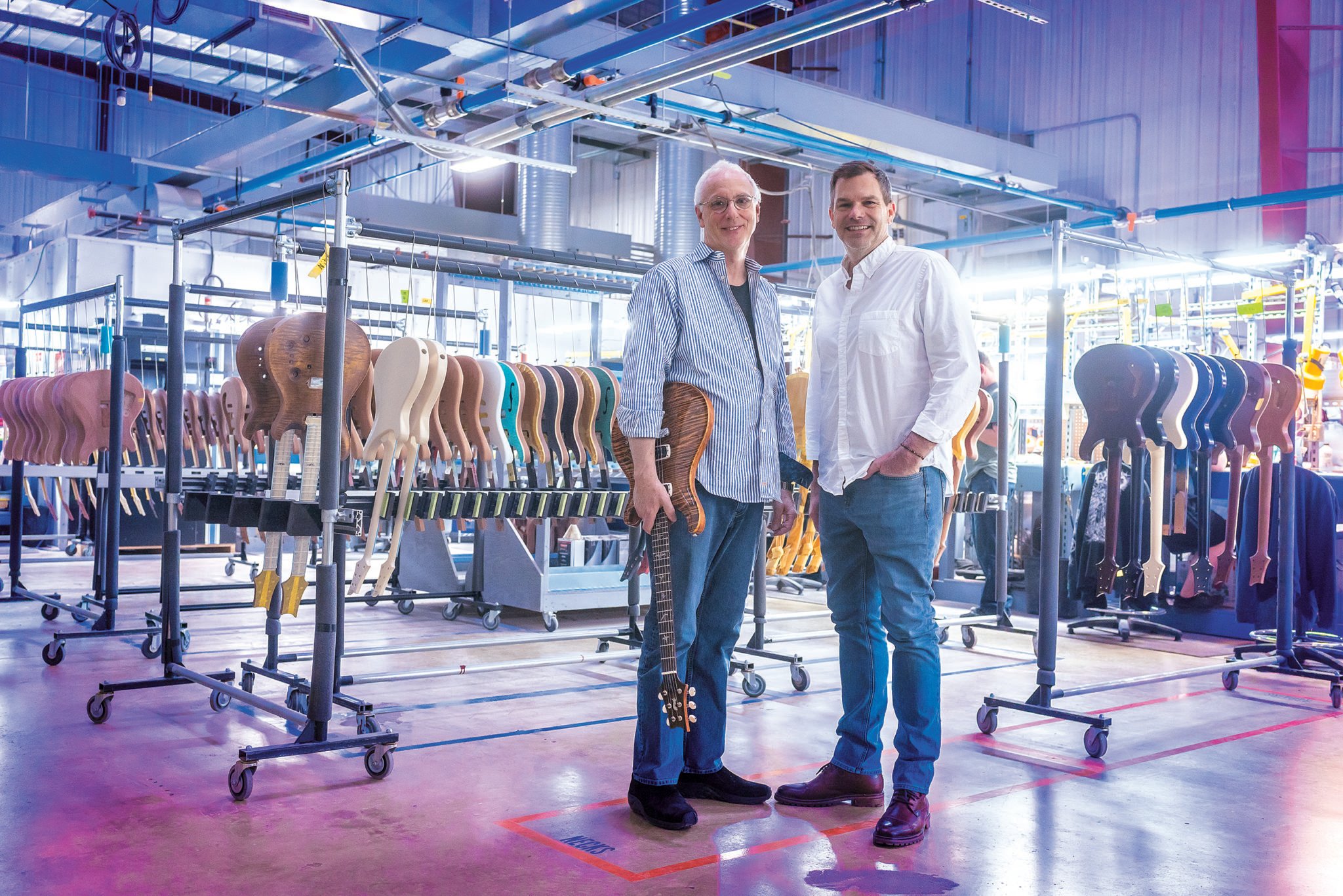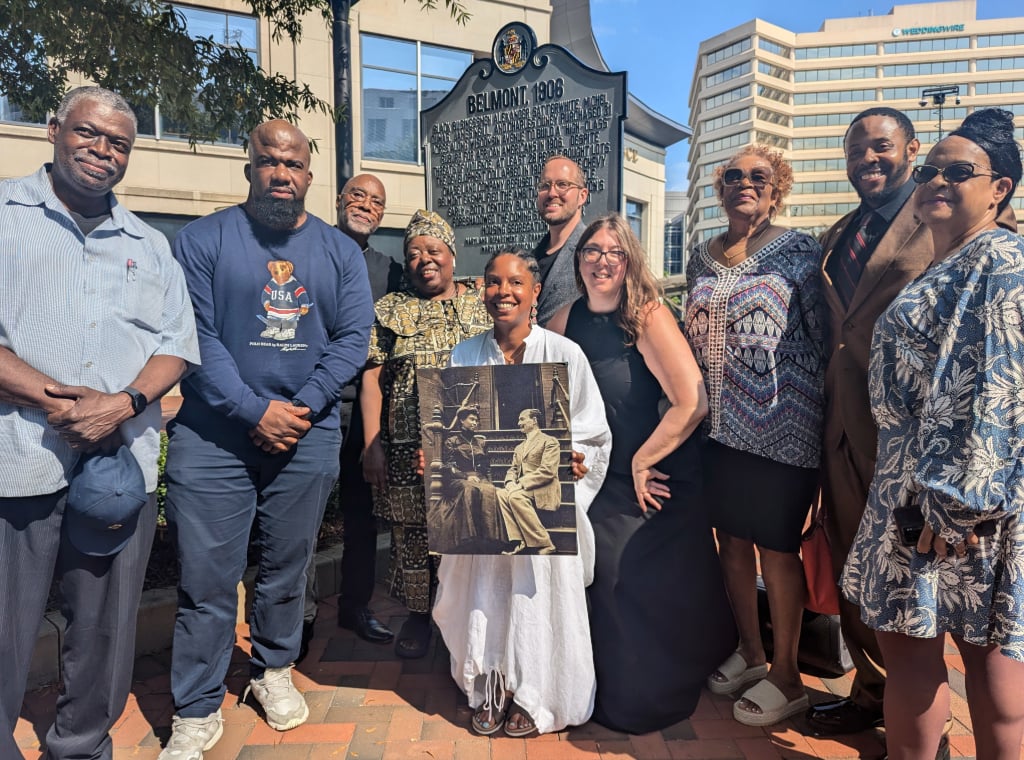At a room-length table in a bland conference room on the second floor of an office building an hour north of DC, two guys are talking about . . . well, I can’t really tell you. We’re discussing some of their work, which involves parts of America’s national-security apparatus. But every time they let slip a detail that might reveal too much, the man across the table—the one with the glasses and unkempt hair and somewhat frenetic manner—asks me to keep it off the record.
Which is fine; I’m more interested in what they do than whom they do it for. What I can tell you is this: The guy across the table, Paul Reed Smith, has figured out a way to improve hazy intelligence photos to such a great extent that various military and security organizations—the kind that don’t want journalists to know what they’re up to—are apparently very excited.
The novelty that has brought a journalist to the room, though, is that Smith is not an espionage-world figure. He’s a rock guy—better known as the founder and CEO of PRS Guitars, which he launched in 1985 in Annapolis, not far from where he grew up in Bowie. Now located in Stevensville, Maryland, it has grown into a world-renowned business, providing axes for the likes of Carlos Santana and Dave Navarro.
Designing guitars is part art and part science, and Smith, the son of mathematicians, was able to tap his facility with geometry and trigonometry to help create his products. Still, he was never much of a numbers geek. “I didn’t want to be a mathematician,” he says. “I wanted nothing to do with it. You get me to do algebra, I’ll hit you. I can’t stand it.”
Yet these days, Smith’s career has taken a turn toward the analytic. In 2015, he founded a spinoff, Digital Harmonic, that’s focused not on music but on advanced-imaging products—technology that, surprisingly, grew out of his music expertise.
Digital Harmonic’s tools let users perceive visuals and sounds that would otherwise be obscured. The math is too complicated to explain here, but the results are impressive: By analyzing the embedded data in waveforms and images, it can make video that was shot at night instantly look as clear as day, or enhance indecipherable sound recordings so conversations can be understood.
Smith’s tech products have earned attention from the defense, intelligence, and medical communities. The US Navy and Northrop Grumman have purchased it, and Digital Harmonic recently announced a partnership with SOFWERX, a technology incubator run by the military. Where John Mayer once came calling, now it’s as likely to be the US Special Operations Command.
Smith started developing this technology nearly 20 years ago. It happened by accident. He and his late father, Jack, were tinkering with ideas for a new PRS synthesizer. While working on it, they figured out a mathematical method of amplifying undetected data from sound waves. Essentially, they could use a computer to isolate and boost individual sounds in a recording.
They tried it out on Led Zeppelin’s “Stairway to Heaven” and were able to pull out each instrument to hear it without the other sounds—something previously impossible without access to multitrack master tapes. “What my father and I discovered, we didn’t even have words for,” Smith says. “But I thought it could be really powerful.”
That instinct was confirmed in the early 2000s when Smith met Henry Hugh Shelton—who had until recently been chairman of the Joint Chiefs of Staff—at a DC event and described what his invention could do. As Smith tells it, Shelton was so taken by the idea that he came by the PRS office. Smith played Shelton the ripped-apart Led Zeppelin recording. “He goes, ‘This has national-security implications,’ ” Smith recalls.
Over the next decade, word of the technology bounced around the intelligence community, but Smith didn’t get serious about turning it into a business until 2015, when, with $5 million from private investors, he spun it into its own company. By the next year, Digital Harmonic had an office and staff, including CEO Scott Haiges, previously a partner at a venture-capital firm. Haiges was instrumental in packaging Smith’s tech into two tools—Precision Measuring Matrix and Pure Pixel—for cleaning up audio and enhancing images, respectively. What started as a fun experiment with his dad had now become a real business.
With Haiges at the helm, Smith has pulled back a bit from Digital Harmonic. But the two still work closely together, bouncing off of each other’s energy like magnets oriented at their identical poles.
One thing that gets them going is new ideas for how to use their products. Oil and gas executives have contacted them to see if a tool could help with drilling, for example. And one potential customer asked Haiges if fingerprints could be captured from a photo that included the person’s hand. Sure enough (and rather creepily), it worked.
While I was at their office, Smith and Haiges were excited to show off what could be the most consequential use for the technology yet: medical imaging. They pulled up some x-rays of a hip bone, which had been taken using a low dose of radiation—safer for the patient but resulting in a blurry picture. Then, with the press of a button, the x-ray was clear. “We’re going to push hard in the health-care space,” Haiges said, “because I think we can make a significant difference with the level of certainty and clarity in images that is not possible right now.”
Whatever happens, Smith will look for new ways to move Digital Harmonic ahead. “Who knows what the ultimate impact will be?” he says. “But if you could measure a heartbeat better than it’s being measured, how could you not tackle that?”
This article appears in the April 2019 issue of Washingtonian.



















